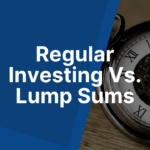If you’re looking to build wealth for retirement, contributing to a Self-Invested Personal Pension (SIPP) is a smart idea. With these pension accounts – which allow you to choose how your retirement savings are invested – contributions come with tax relief and your savings can grow free of tax. Interested to learn how much wealth you could potentially build up in the long run with one of these accounts? Here’s a look at the amount of savings you could potentially have by 65 if you were to put £750 into a SIPP every month starting today.
How much could you build up?
The amount of money you could potentially build up for retirement with a SIPP by contributing £750 per month is going to depend on four main factors. These are:
- The age you start contributing – the younger the better as you’ll have more time to take advantage of the power of compounding.
- The tax relief you can claim – the tax relief on offer is 20% for basic-rate taxpayers, 40% for higher-rate taxpayers, and 45% for additional-rate taxpayers.
- Your investment returns – these can vary depending on what assets you’re invested in and how they perform.
- The fees you are paying – these will vary depending on your provider, the types of investments you are in, and how often you trade.
A 6-figure retirement pot
Let’s say, however, that you are a basic-rate taxpayer (entitled to 20% tax relief), you start contributing £750 per month (£937.50 after tax relief) to a SIPP at the age of 50, and you are able to achieve a 7.5% return per year over the long run after fees. In this scenario, you’d have approximately £295,000 by the age of 65. That’s a decent amount of money and it could help to provide a comfortable retirement.
If you were to start contributing earlier, however, you could potentially build up far more money for retirement.
Let’s say you start contributing at 40 instead of 50 (still contributing £750 per month as a basic-rate taxpayer) and you are able to achieve a 7.5% return per year after fees over the long run. In this scenario, you’d have about £770,000 by the age 65. That’s obviously far more money for retirement. And it highlights the importance of starting early and taking advantage of the power of compounding.
How to generate high returns in a SIPP
So, starting early is very important when saving for retirement via a SIPP. But it’s not the only important factor when it comes to building long-term wealth. Another is generating strong returns. So, how does one aim to do that?
Well, the best way to achieve good returns over the long run is to construct a diversified portfolio that contains a mix of different assets including UK shares, international shares, bonds, and alternative investments (e.g. commercial property or commodities). With a solid investment strategy that encompasses multiple types of assets, it’s not unreasonable to expect a return of 8% per year over the long run.
It’s worth noting here that investment funds (mutual funds or ETFs) can be a very effective tool when it comes to portfolio diversification. With these products, one can potentially get access to hundreds or thousands of stocks with just one investment.
An example of an ETF is the iShares Core MSCI World UCITS ETF (ticker: SWDA). This is a global index fund that provides access to around different 1,350 stocks.
How to lower fees in a SIPP
Fees are also an important factor when it comes to building wealth. Ideally, you want to keep them to a minimum.
Now, there are several strategies that can help to reduce fees. One is to choose a low-cost SIPP provider. Another is to invest in low-cost index funds or ETFs.
Investing in individual stocks can also help to lower fees. With Hargreaves Lansdown’s SIPP, for example, annual platform charges are just 0.45% (and capped at £200) when you invest in stocks.
Finding the best SIPP
It’s worth pointing out that not all SIPPs are created equal. Some have far more investment options than others. Meanwhile, some have more attractive fee structures than others. If you’re looking to compare SIPP providers and find an account that suits your needs, you can find plenty of information on these accounts right here at Good Money Guide.

Based in London, Edward is a distinguished investment writer with an extensive client portfolio comprising a diverse array of prominent financial services firms across the globe. With over 15 years of hands-on experience in private wealth management and institutional asset management, both in the UK and Australia, he possesses a profound understanding of the finance industry.
Before establishing himself as a writer, Edward earned a Commerce degree from the prestigious University of Melbourne. Complementing his academic background, he holds the esteemed Investment Management Certificate (IMC) and is a proud holder of the Chartered Financial Analyst (CFA) qualification.
Widely recognized as a sought-after investment expert, Edward’s insightful perspectives and analyses have been featured on sites such as BlackRock, Credit Suisse, WisdomTree, Motley Fool, eToro, and CMC Markets, among others.
You can contact Ed at edward@goodmoneyguide.com





